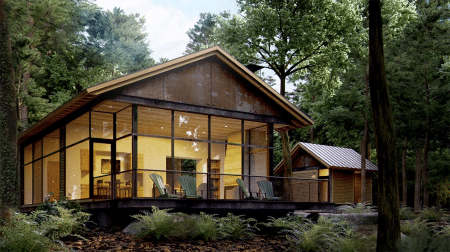By: Jonn Kutyla
In the competitive marketing world, renderings and visualizations play a crucial role in conveying the essence of a project to potential clients. It can attract the attention of potential buyers and investors, which is the core of marketing.
While showcasing a project from every angle may seem comprehensive, there is a growing recognition that focusing on the core idea behind the project can be more impactful. Successful marketing projects do not overwhelm the viewer. Instead, they get a taste of what could be there and want more.
This article explores the power of strategic visualizations that emphasize the essence of an idea rather than inundating viewers with excessive details.
Emphasize the Big Picture

Less can be more. This phrase cannot be underscored enough. Instead of bombarding viewers with an overload of camera angles, opt for a more focused approach highlighting the project’s overarching idea or concept. The bigger picture view is easier to digest.
Clear communication is key. By presenting a concise and compelling visual narrative, viewers can quickly grasp the fundamental message and purpose of the project. If the message was not clear, the viewer would lose interest and turn away from the product, making the marketing useless.
Highlight Key Features
Distill the essence. Identify and emphasize the unique selling points or key features of the project. Showcase them through targeted camera angles to capture the viewers’ attention and leave a lasting impression. The key features are what a potential buyer will remember when they leave.
Tell a story. Utilize visual storytelling techniques to guide viewers through a narrative that showcases the project’s value proposition and how it addresses specific needs or challenges. Storytelling also aids in having the audience remember what you, as the marketer, want them to take away. A good story will highlight the key features and make them easy to remember.
Engage Emotions
Evoke the desired emotions. Use visualizations that evoke the intended emotional response aligned with the project’s vision. Whether it’s a sense of luxury, sustainability, or innovation, focus on angles that elicit the desired emotional connection with the audience. This will attract the target demographic, too.
Create aspiration. Renderings should present the idea and create a sense of aspiration and desire within viewers. A well-executed visualization can inspire individuals to envision themselves as part of the project’s story.
Foster Curiosity

Leave room for imagination. By employing more narrow camera angles, viewers are encouraged to fill in the gaps with their imagination. This approach can pique curiosity and stimulate further engagement with the project.
Spark conversation. A strategically crafted rendering that sparks curiosity can become a conversation starter, generating buzz and fostering discussion around the project. The more people talk about your project, the more people will know about it. This is a win for you to reach a broader audience and a win for them to find a new project to integrate into their lives.
Summary
In today’s fast-paced marketing landscape, renderings and visualizations must go beyond showcasing the project from every possible angle. By focusing on the core idea and presenting targeted camera angles, marketers can effectively communicate the project’s essence, engage emotions, foster curiosity, and leave a lasting impact on viewers. The power of strategic visualizations lies in their ability to evoke emotions, tell captivating stories, and inspire individuals to connect with a project on a deeper level.
Author Bio:
Jonn Kutyla founded PiXate Creative, a leading 3D architectural visualization company. With a passion for technology and a keen eye for design, Jonn has revolutionized the architecture industry by seamlessly integrating 3D technology into the creative process. Committed to sustainable design and efficient communication, Jonn continues to shape the future of architectural visualization, leaving a lasting impact on the industry and inspiring others with his forward-thinking approach.
Published by: Khy Talara










